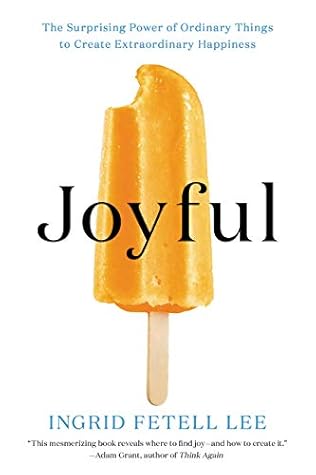More on this book
Community
Kindle Notes & Highlights
Started reading
October 25, 2019
Of course, unlike plants, we can’t just absorb it from our surroundings. Yet sometimes, the energy around us does affect the energy within us. How many times have you gone to a party exhausted after a tough week of work, insisting you’ll stay for just one drink, only to perk up once you hear the beat of the music? Or have you ever noticed that it’s easier to get out of bed on sunny days than on gray ones? I began to wonder why some environments have this stimulating effect, and how we might be able to bring more joyful energy into our lives.
David Hicks, who believed that the idea of colors clashing with one another was a fiction cooked up by “genteel women” in the 1930s. “Colors do not clash,” he said. “They vibrate.”
Beth owns no dark coats, only ones in vivid shades like yellow and green. On a miserable winter day she notices that people walk by and smile. It’s almost as if a colorful garment is a tiny gift, a brilliant spot of joy in a bleak landscape.
Describing an office he’d recently been to, he noted that the even rows of fluorescent lights made it feel like the place was covered by an “overcast sky.” Offices are designed for uniform lighting, so that there’s enough light to read wherever you sit. But that flat, even light creates a dull energy. According to Shaver, who has designed lighting schemata for the Getty Museum and countless private homes, “it’s those streaks of sunlight coming through” that create “a joyous environment.”
A sofa by the fireplace, a window seat, a dining table bathed in the warm light of a pendant lamp: these places are always alive because we, like moths, cannot resist the light.
Left unsatisfied, the craving for sensations can become an actual hunger. A few years ago on a trip to Kauai, I noticed something funny. Five days in, I hadn’t had a single snack between meals. This was strange because, at home, I’m an inveterate grazer. There’s nearly always a packet of trail mix or a bowl of popcorn on my desk. But on this vacation, not a nibble. I realized that in Hawaii I was surrounded all day by the lush textures of the jungle, the whoosh of the ocean, and the smell of salt water. I had my feet in volcanic sand and a lei of plumeria flowers around my neck. I was
...more
Something as simple as how you slice your food can dramatically change the experience.
When I do have a snack craving, I try to pause and ask myself if what I’m feeling is a food hunger or a sense hunger and, if the latter, if there’s anything else I can do about it.
I also think about vacations differently now. I used to view a trip as a way to take a break from my overly hectic life, seeking out quiet spaces where I could just unwind and relax. Now I recognize that burnout often has as much boredom in it as exhaustion. So I look at vacations as a way to soak in sensations that are different from those at home and to sponge them up so I can call on them later.
One possible reason is that spending time in nature decreases blood flow to a part of the brain called the subgenual prefrontal cortex, which is associated with the tendency to brood over problems.


